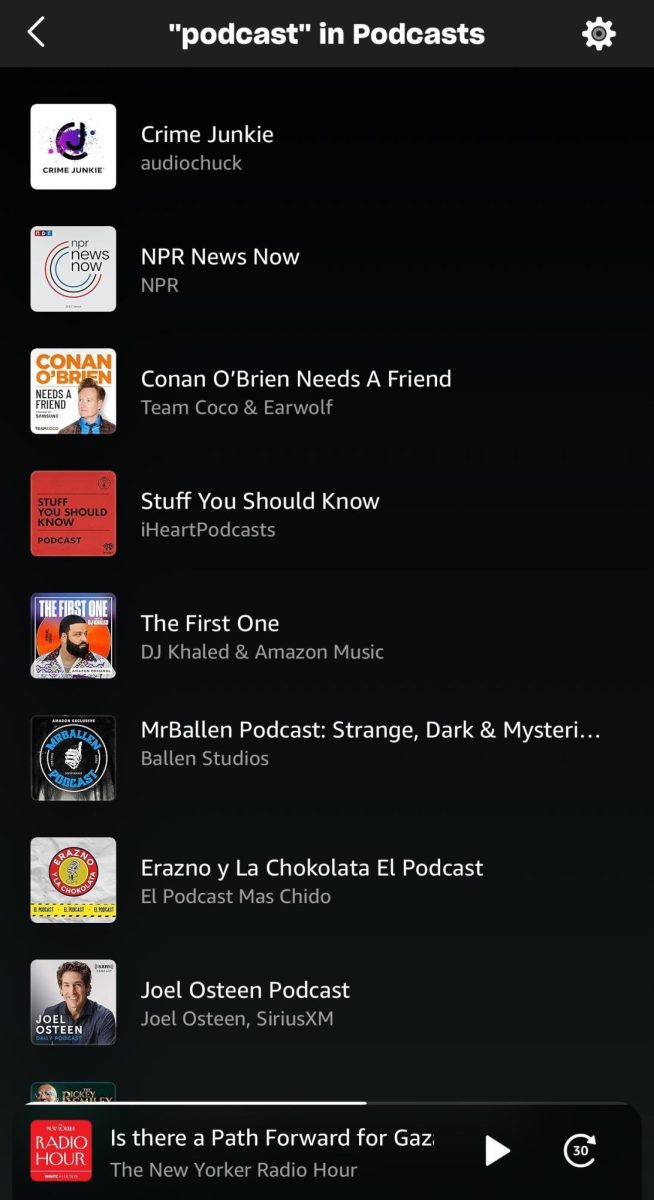Podcasting is an up-and-coming way of communicating a nuanced perspective on various topics and ideas. Every podcast has its own unique and distinctive way of communicating its thesis and line of reasoning, and each has its own way of creating its individualized image. Yet, creators still follow a similar methodology when creating a podcast, and they add their own special touches to make it more catered to their taste and audience.
The very first step is to gather and read information on the topic you wish to explore. You should grab snippets of evidence that fit in with the specific perspective you are taking within your topic. For example, if your topic is related to the treatment of fast food workers, and your take is that the ‘exploitation of workers in the meat producing industry disproves the American Dream’, you would look for articles criticizing fast food production practices. After gathering the necessary information, you should be able to create a nuanced thesis that conveys your viewpoint and a brief overview of your line of reasoning. For example, an effective thesis may read, “The exploitation of fast food laborers illustrates the corruption of the American Dream, created by fast food trailblazers, leading to the oppression of workers.” After crafting an argument, figure out the audience you will be catering to. With the previous example, some audiences may include corporation owners or policy-makers – both of which need to be convinced of the problem.
Next, you must start drafting and figuring out the map of your argument. You should think of the written draft as an essay that has more illustrative jokes than its predecessor. The beginning should feature background information and an implied thesis, which has your perspective and an overlook of the line of reasoning. Then as you go on, there are claims and evidence, which you cite in your paper (and when recording, you may say “according to so-and-so”). Remember to make note of where you want to include sound effects to make the scene more vivid to listeners.
Throughout the draft, it is recommended to signpost to elucidate and emphasize parts of your argument so that your reader is not lost in all the information provided. Signposting will help make the direction of your argument clear and relate your argument to your thesis. Examples of signposting include comparing and contrasting two points of view to show the history of debate behind the issue, using extreme and absolute language to demonstrate the extremity of the situation, and posing rhetorical questions to guide your audience and the next section of the argument.
Finally, in the last part of the draft, you should bring everything together, and raise the stakes. Continuing the example of exploiting workers, there should be a mention of the rising death rate among this working class, the worsening conditions in factories, and increasing cases of food poisoning due to poor working conditions in the meat-making process.
The final step of podcasting is the recording process. Before starting, it is recommended to read your written draft out well and determine the tone (synonymous with your topic), which you will carry out throughout the piece. However, you and your other group members must create a collective voice to collaboratively convey your whole stance on the topic. There should not be one person carrying the podcast. With the example of fast food workers, there should be a more serious tone or voice when discussing the topic, rather than a jocular one, that should be maintained by everyone. It doesn’t suit the podcast if one person is making jokes about the subtle downfall of American policy and everyone else speaks critically about the topic.
Yet even with a mindset towards collaboration, there is still room for personalization. You can still include your ideas, but it is important to figure out a collective rhythm whilst maintaining your voice. After figuring this out, start recording, and remember to not get frustrated if you don’t get it the first time; this process will take multiple drafts. Figure out where you went wrong and improve the next time around! After getting the best take, add sound effects and other editing maneuvers to enhance the argument, and there you have it, your very own podcast!














